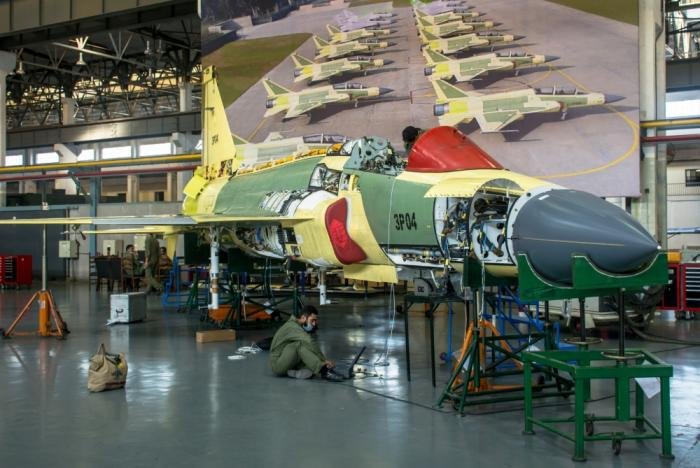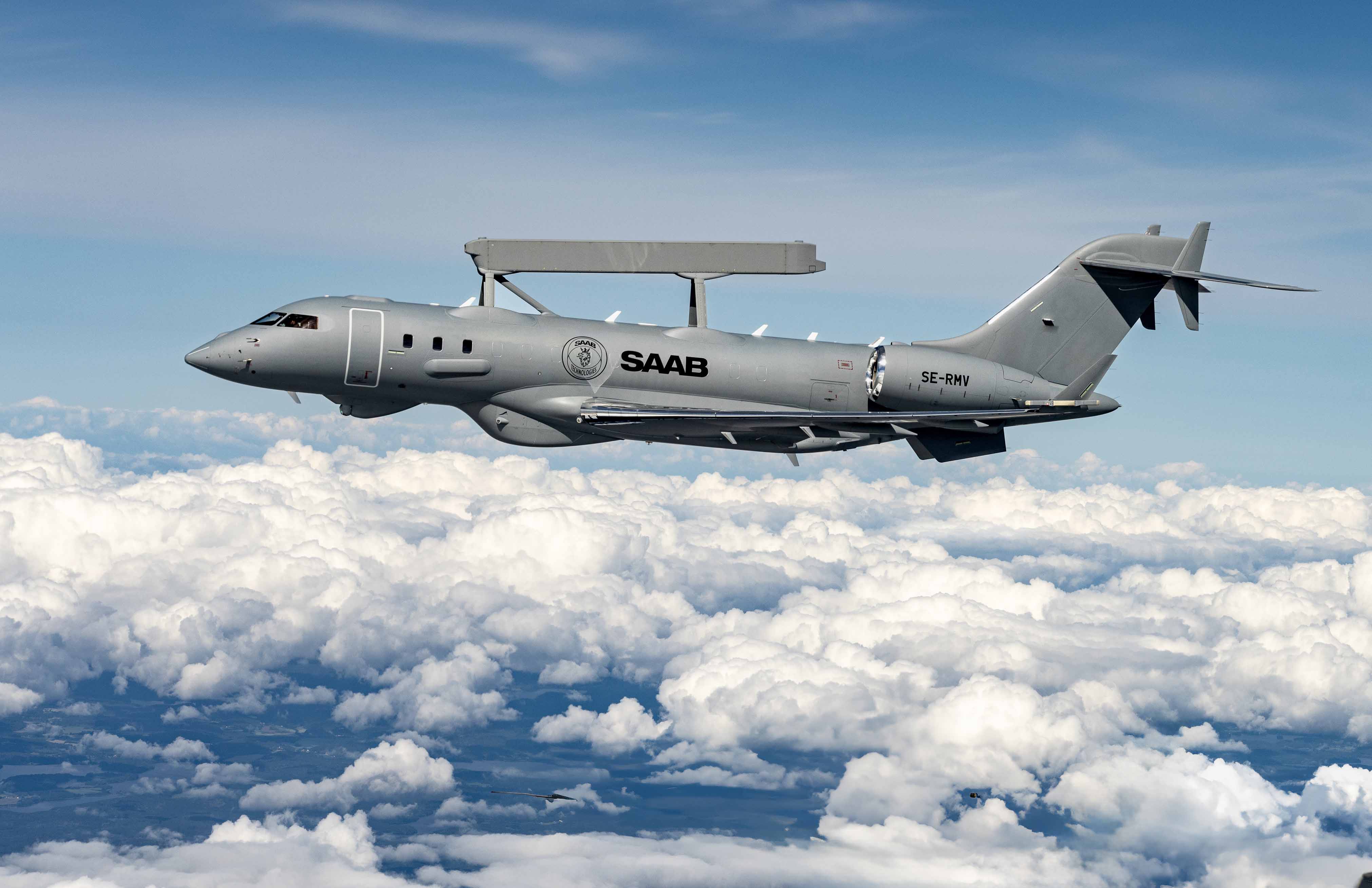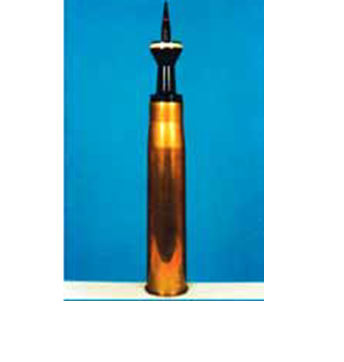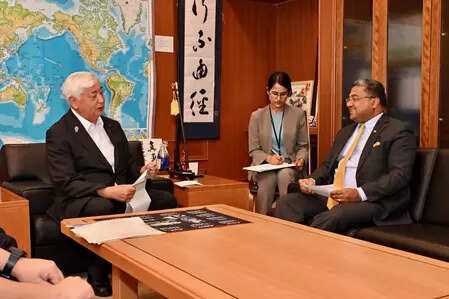SOURCE: RAUNAK KUNDE / NEWS BEAT / IDRW.ORG


In a significant step towards bolstering India’s indigenous fighter jet capabilities, Hindustan Aeronautics Limited (HAL) is making steady progress on the Tejas Mk2, the next-generation variant of the Light Combat Aircraft (LCA). Speaking to Flightglobal, HAL Chairman and Managing Director DK Sunil revealed that the production of key components for the Tejas Mk2 is well underway, with sub-assemblies such as wings and fuselage currently in progress. The state-owned airframer is targeting a rollout of the first prototype in the first quarter of 2026, marking a pivotal milestone in India’s quest for self-reliance in defence manufacturing.
“[Tejas Mk2] parts are being manufactured, and we are now into sub-assemblies, with [production of] the wings and fuselage going on,” Sunil told Flightglobal. The first Tejas Mk2 is expected to be rolled out between January and March 2026, at which point the aircraft will be powered on, and ground checks will commence. HAL anticipates the aircraft’s maiden flight later in 2026, a critical step towards validating its design and performance.
Continue readingSOURCE: RAUNAK KUNDE / NEWS BEAT / IDRW.ORG


Tata Advanced Systems Limited (TASL), a leading Indian aerospace and defence company, made a strong impression at the DEFEA 2025 exhibition in Athens, Greece, with its flagship Wheeled Armoured Platform (WhAP) 8×8 and advanced loitering munitions, including the ALS-50 and the newly developed ALS-250. Seshadri Srinivasan, Head of Land Mobility at TASL, confirmed that the Greek military has expressed keen interest in the WhAP 8×8 Armoured Personnel Carrier (APC), which was prominently showcased at the event.
Alongside the WhAP, TASL highlighted its cutting-edge loitering munitions, including the battle-tested ALS-50 and the long-range ALS-250, designed for surveillance and precision strikes in challenging terrains like the Line of Actual Control (LAC). This display underscores India’s growing prowess in defence manufacturing and its ambition to expand into the European market under the Make in India initiative.
Continue readingSOURCE: RAUNAK KUNDE / NEWS BEAT / IDRW.ORG


In a significant development for defense cooperation between Armenia and India, talks have commenced for the potential integration of India’s indigenous Astra Mk1 Beyond Visual Range Air-to-Air Missile (BVRAAM) into the Armenian Air Force’s fleet of four Su-30SM multirole fighters. According to a report by the Indian Defence Research Wing (idrw.org), this move would see the Astra Mk1, with a range of 110 km, replace the Russian-made R-77 BVRAAM, which has a maximum range of 80 km, enhancing the Armenian Air Force’s air combat capabilities.
The discussions also hint at Armenia’s interest in the yet-to-be-produced Astra MkII, though it remains unclear whether Armenia will opt for both variants or settle for one, given the MkII’s production is slated to begin next year.
Continue readingSOURCE: AFI


In a startling revelation, Lieutenant General Rahul R Singh, Deputy Chief of Army Staff (Capability Development & Sustenance), has hinted at significant Chinese involvement in providing real-time intelligence to the Pakistan Air Force (PAF) during the recent India-Pakistan military conflict, codenamed Operation Sindoor. Speaking at the ‘New Age Military Technologies’ event organized by FICCI, Lt Gen Singh disclosed that Chinese surveillance capabilities were not only monitoring Indian Air Force (IAF) fighter jets but also relaying critical, real-time data to the PAF, enabling them to track IAF movements with precision.
According to Lt Gen Singh, during de-escalation talks between the Directors General of Military Operations (DGMOs) of India and Pakistan, the Pakistani DGMO explicitly referenced their awareness of specific IAF operations. “When DGMO-level talks were going on, Pakistanis were actually mentioning that we know that your such and such important vector is primed and ready for attack, and we would request you to perhaps call it off,” Lt Gen Singh stated. This suggests that Pakistan had access to highly accurate and timely intelligence about IAF assets, including their positioning and readiness.
Continue readingSOURCE: AFI


In a series of meticulously planned operations during the recent India-Pakistan conflict, the Indian Air Force (IAF) successfully destroyed 10 air defense radars operated by the Pakistan Air Force (PAF) and Pakistani Army, marking a significant blow to Pakistan’s aerial defense network. The attacks, part of Operation Sindoor conducted in early May 2025, involved two prolonged assault phases and showcased the IAF’s advanced Suppression of Enemy Air Defenses (SEAD) capabilities.
The PAF’s attempt to evade detection by switching off the radars proved futile, as IAF’s Israeli-made Harop loitering munitions and Rampage air-to-ground missiles effectively targeted and neutralized both Chinese and American radar systems, exposing vulnerabilities in Pakistan’s air defense strategy.
Continue readingSOURCE: AFI


The Pakistan Air Force (PAF), recently offered the Chinese KJ-500 Airborne Early Warning and Control (AEW&C) aircraft by China, appears to be gravitating toward the Swedish Saab GlobalEye AEW&C platform, installed on the Bombardier Global 6000/6500 long-range business jet. This shift in interest comes despite China’s broader defense package, which includes the KJ-500, J-35A stealth fighters, and HQ-19 air defense systems, announced on June 6, 2025.
The PAF’s preference for the GlobalEye, a more advanced successor to the Saab 2000 Erieye AEW&C it currently operates, is driven by its positive experience with Swedish technology, the poor performance of retired Chinese ZDK-03 AEW&C platforms, and the recent losses of two Saab 2000 Erieye aircraft during India’s Operation Sindoor in May 2025. This article explores the PAF’s strategic pivot, the technical advantages of the GlobalEye, and the implications for Pakistan’s air defense capabilities.
Continue readingSOURCE: AFI


The Armament Research and Development Establishment (ARDE), a premier laboratory under India’s Defence Research and Development Organisation (DRDO), has issued a call for industry partners to co-develop an advanced 105mm Fin-Stabilized Armor-Piercing Discarding Sabot (FSAPDS) round for the Indian Army’s Zorawar-class light tanks.
This initiative aims to equip the indigenously developed Zorawar tanks with a high-performance anti-armor capability optimized for high-altitude combat, reinforcing India’s armored warfare capabilities in challenging terrains like Ladakh. The collaboration underscores India’s commitment to self-reliance in defense manufacturing under the “Aatmanirbhar Bharat” initiative, while fostering innovation through public-private partnerships.
Continue readingSOURCE: REUTERS


India will launch a $234 million incentive programme for civil and military drone makers to reduce their reliance on imported components and counter rival Pakistan’s programme built on support from China and Turkey, three sources told Reuters.
India’s push to build more home-grown drones stems from its assessment of the four-day clash with Pakistan in May that marked the first time New Delhi and Islamabad utilized unmanned aerial vehicles at scale against each other. The nuclear-armed neighbours are now locked in a drones arms race.
Continue readingSOURCE: IANS


Reacting to the recent statement made by Tibetan spiritual leader the Dalai Lama, India on Friday stated that it does not take “any position” or speak on matters concerning beliefs and practices of faith and religion.
“We have seen reports relating to the statement made by His Holiness the Dalai Lama about the continuation of the Dalai Lama institution. Government of India does not take any position or speak on matters concerning beliefs and practices of faith and religion. Government has always upheld freedom of religion for all in India and will continue to do so,” said Ministry of External Affairs (MEA) spokesperson Randhir Jaiswal in response to media queries on the issue.
Continue readingSOURCE: IANS


In a landmark achievement for gender equality in the Indian Armed Forces, Sub Lieutenant Aastha Poonia has made history by becoming the first woman to be inducted into the Fighter stream of Naval Aviation. Her trailblazing accomplishment marks a significant step forward for women’s representation in the Indian Navy and sets a powerful precedent for future generations.
This significant milestone was marked during the Winging Ceremony of the Second Basic Hawk Conversion Course held at INS Dega, Visakhapatnam, on July 3.
Continue readingSOURCE: REUTERS


A senior Indian minister has said that only the Dalai Lama and the organization he has set up have the authority to identify his successor as the spiritual head of Tibetan Buddhism, in a rare comment contradicting rival China’s long-held position.
The Dalai Lama, who fled to India in 1959 after a failed uprising against Chinese rule, said on Wednesday that upon his death he would be reincarnated as the next spiritual leader and that only the Gaden Phodrang Trust would be able to identify his successor. He previously said the person would be born outside China.
Continue readingSOURCE: UNI


External Affairs Minister S Jaishankar said India has conveyed to the United States its concerns about a proposal to impose 500 percent tariffs on countries buying oil from Russia, asserting “we will cross the bridge when we come to it”. Dr Jaishankar said at a press conference here last night that any development in the US Congress that affects India, is of interest to New Delhi. He was commenting on the US proposal to impose 500 percent tariff on countries buying oil from Russia.
Dr Jaishankar said India’s concerns had been conveyed to Senator Lindsey Graham. Senator Lindsey Graham is in discussions with President Donald Trump about the proposed Bill on Russia to impose a 500 per cent tariff on imports from any nation that purchases Russian oil, gas, uranium and other products. Some Republican lawmakers have expressed concern about advancing the Bill.
Continue readingSOURCE: IANS


India’s Ambassador to Japan, Sibi George on Friday called on Japanese Defence Minister General Nakatani, discussing initiatives to enhance India-Japan defence cooperation in the Indo-Pacific region. “On July 4, Defence Minister Nakatani received a courtesy visit from the Indian Ambassador to Japan. The two exchanged views on advancing Japan-India Defence Cooperation (JIDIP) in the Indo-Pacific region. We will continue to work closely with India,” Japan’s Ministry of Defence posted on X.
India-Japan defence and security partnership forms an integral pillar of bilateral ties. India-Japan defense exchanges have gained strength in the recent years due to growing convergence on strategic matters, and their significance is growing in the common outlook on issues of peace, security, and stability in the Indo-Pacific region.
Continue readingSOURCE: IANS


In a major breakthrough, the security forces in joint operations have recovered 203 arms and around 160 different types of ammunition in restive Manipur, officials said here on Friday.
A senior official said that, acting on specific intelligence regarding the presence of a large cache of arms, ammunition, and other warlike materials concealed in various locations, coordinated operations were launched simultaneously at multiple sites in the interior and suspected areas of four hill districts.
Continue readingSOURCE: IANS


After “Sikandar”, Salman Khan is all set to grace the big screen once again with the forthcoming war drama, “Battle Of Galwan”. Giving the movie buffs an initial glimpse of Apoorva Lakhia’s directorial, the makers have unveiled the first look poster from the drama.
Khan was seen sporting a mustache for his role as a soldier in “Battle Of Galwan”. He was seen looking all fierce in his rugged battle avatar with a bloodied face and intense determination in his eyes. The poster further included the words, “Over 15,000 feet above sea level India fought its most brutal battle without firing a single bullet.”
Continue reading